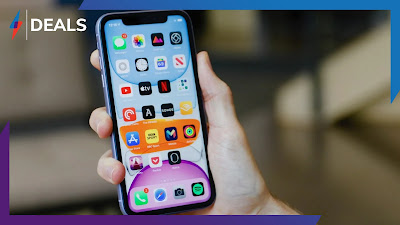How to Unlock an iPhone: The Ultimate Guide to Unlocking Your Device
Introduction
In this digital age, owning a smartphone has become a necessity, and one of the most popular choices is the iPhone. However, many users find themselves in a situation where their iPhone is locked to a specific carrier or restricted in some way. If you're wondering how to unlock an iPhone, you've come to the right place. In this comprehensive guide, we will walk you through the process of unlocking your iPhone, providing you with the necessary steps and information to regain full control over your device. So, let's dive in and explore the world of iPhone unlocking!
How to Unlock an iPhone: Step-by-Step Guide
Step 1: Check Your Eligibility
Before diving into the unlocking process, it's essential to check if your iPhone is eligible for unlocking. In most cases, iPhones are locked to a specific carrier when purchased. You can contact your carrier or use their online tools to determine whether your device is eligible for unlocking. Additionally, ensure that you've met all the requirements set by your carrier, such as contract fulfillment and payment of outstanding bills.
Step 2: Contact Your Carrier
Once you've confirmed your eligibility, the next step is to get in touch with your carrier's customer support. Reach out to them via phone, email, or visit a local store to initiate the unlocking process. Provide them with the necessary information, such as your iPhone's IMEI number, which can be found in the device settings or by dialing *#06# on your phone.
Step 3: Request an Unlock
Inform your carrier representative that you wish to unlock your iPhone. They will guide you through the specific requirements and procedures for unlocking your device. Follow their instructions carefully and provide any additional information or documentation they may require. The unlocking process usually involves submitting a request and waiting for it to be processed by the carrier.
Step 4: Wait for Confirmation
After you've submitted the unlock request, you will need to wait for confirmation from your carrier. The processing time may vary depending on the carrier and their policies. During this waiting period, it's important to remain patient and avoid attempting any unauthorized unlocking methods that could potentially harm your device.
Step 5: Backup Your iPhone
While waiting for the unlock confirmation, it's a good practice to create a backup of your iPhone. Backing up your device ensures that you don't lose any important data during the unlocking process. You can use Apple's iCloud service or connect your iPhone to a computer and back up using iTunes or Finder.
Step 6: Insert a SIM Card from Another Carrier
Once you receive the confirmation from your carrier that your iPhone has been unlocked, it's time to insert a SIM card from another carrier. Power off your iPhone, remove the existing SIM card, and insert the new one. Power on your device, and it should now be able to connect to the new carrier's network.
Step 7: Complete the Setup
After inserting the new SIM card, your iPhone may prompt you to complete the setup process. Follow the on-screen instructions to configure your device with the new carrier's settings. This may include updating carrier settings, configuring data and messaging settings, and activating additional features specific to the new carrier.
Frequently Asked Questions (FAQs)
Q1: Can I unlock my iPhone for free?
A1: The availability of free unlocking methods for iPhones depends on various factors, such as the carrier, model, and region. Some carriers offer free unlocking services after fulfilling certain requirements, while others may charge a fee. It's best to contact your carrier to inquire about their unlocking policies.
Q2: Can I unlock my iPhone without contacting my carrier?
A2: While some unofficial unlocking methods claim to bypass carrier restrictions, it's highly recommended to go through the proper channels and contact your carrier for unlocking. Unauthorized unlocking methods may lead to unforeseen consequences, such as voiding your warranty or rendering your device unusable.
Q3: Is unlocking my iPhone legal?
A3: Unlocking iPhones is generally considered legal in many countries, including the United States. However, it's essential to check the laws and regulations specific to your region, as they may vary. Unlocking your iPhone through authorized methods provided by your carrier ensures compliance with legal requirements.
Q4: Will unlocking my iPhone affect its warranty?
A4: Unlocking your iPhone through official channels, as guided by your carrier, should not affect your device's warranty. However, using unauthorized unlocking methods or third-party services can potentially void your warranty. It's crucial to follow the recommended unlocking procedures to protect your device and maintain its warranty coverage.
Q5: Can I unlock a second-hand iPhone?
A5: Yes, it's possible to unlock a second-hand iPhone. However, the unlocking process may vary depending on factors such as the device's original carrier, activation status, and eligibility. It's advisable to contact the carrier or use their online tools to determine the unlock status of the iPhone before making a purchase.
Q6: What should I do if I encounter issues during the unlocking process?
A6: If you encounter any issues or difficulties while unlocking your iPhone, the best course of action is to contact your carrier's customer support. They have the expertise to assist you and provide the necessary guidance to resolve any problems you may face.
Conclusion
Unlocking your iPhone gives you the freedom to choose the carrier that best suits your needs and enables you to use your device internationally. By following the step-by-step guide provided in this article, you can unlock your iPhone with confidence, knowing that you're going through the proper channels and maintaining the integrity of your device. Remember to check your eligibility, contact your carrier, and patiently follow their instructions. With an unlocked iPhone, you can enjoy a world of possibilities and make the most out of your smartphone experience.

